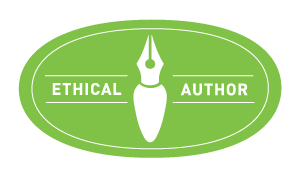June
Tuesday 16th. . . Otis went to fathers before dinner & staid till night & made me a bread board, rolling pin, mop-stick, & ironing board.
Wednesday 17th. Rainy. Aunt Lucinda [King] gave us a pail of soap & Otis went & got it. I baked bread in our new stove for the first time. I like it the best of any I have ever seen.
July
Thursday 16th. I went to fathers in the morning & staid till night & put up water on the leech to make soap.
Friday 17th. The mosequetoes did not trouble us much. I went to fathers before dinner, found Albert L[ong] standing at the gate. He had ran away & I sent him right home. Put up more water, but as there will not be lye enough, mother will put it in the kettle with the grease & let it stand till we get more ashes.
Wednesday 22nd. Cloudy. Otis chopped at fathers, put up ashes to make soap &c.
Saturday 25th. We wrote to [Otis's] mother & [Otis's brother] Sylvester. Otis went to Lyons with Uncle M[yron King] & I to fathers & finished the soap. . . .
Sunday 26th. . . . Otis went to fathers to see the soap. He says I must boil it more.
Thursday 30th. Very warm. I went to fathers & boiled the soap. It is quite good. And I split some straw, & had some raspberry sauce, which was delicious.
_____
June 1857 is when Otis and Rosette moved into their little shanty on the farm where they would the next summer build their house (which still stands today). It is charming to see Rosette's list of household items Otis fashioned for her. A critical part of pioneer housekeeping was washing--clothes, dishes, and hard-working people. Otis's aunt gave them a pail of soap as a wonderful housewarming gift.
I am privileged that my friend Lori Chandler of Ashgrove Soaps, a Handcrafted Soap & Cosmetic Guild Certified Teacher and Soapmaker, reviewed with me the soapmaking details in the journal. Here is what I gleaned
from Ms. Chandler about the soapmaking process and what was likely going on with each of the entries:
Putting up water on the leach is adding water to a barrel of ashes that have been collected over time, often in an "ash hopper." Different kinds of wood produced different quantities of potassium hydroxide, and the concentration of lye draining out of the barrel would vary according to the quality of the ash. The caustic lye was commonly tested with a feather--if the quill dissolved away, the lye was too strong, and if the barbs remained, it was too weak, but if the quill remained and the small barbs of feathers dissolved away, it was just right. Rosette's mother Sally Ramsdell presumably tested it and called for more ash.
The grease they added the leach water (lye) was from the rendered fat of animals which may have included those from the wild or from the farm. Frequently lard from pigs was used in soapmaking. A family butchering a pig might smoke the hams and render the fat for soapmaking at the same time. The next mention of soapmaking in the journal is in October, a traditional butchering time when some fresh meat might be preserved by the cold and some by salting. Ms. Chandler says the resulting soap "was a soft bar" and used for all soap needs in the family--laundry, dishes, and bathing.
Soap is made in several ways. Cold-processed (requiring three weeks) and hot-processed (ready for use as soon as made) are two common methods. The dates in the journal suggest Rosette's was a combination. The process, called "saponification," turns oils and lye into soap. Although Otis did not approve of his wife's first efforts, it's encouraging that she pronounces the soap "quite good" at the end. During the 1800s a soapmaker would judge a soap according to his experience and visual cues. Hot-process soap could be made in a kettle using low heat on a woodstove or outside hanging from a tripod or spit over a bed of coals. Soapmaking was a craft of both genders in a family--Otis seems to be the one making it on his own in October of 1857, when Rosette was just a few weeks past childbirth. According to Ms. Chandler, commercial soapmakers of this era were usually male.
Ms. Chandler adds that times have changed and so have the knowledge and skills related to soapmaking. With modern methods, handcrafted soap techniques are no longer based on oral tradition handed down from previous generations, but are formulated by soapmaking artisans using current technical knowledge.

To learn more about historic soapmaking and perhaps order some of Lori Chandler's amazing soaps (I gave some as bridal shower gifts this year), please visit AshgroveSoaps.com. I look forward to enjoying a daylong workshop with Lori in February 2016. The Pittsburgh Soapmaker Gathering is coming up in June 2016, with a traditional soapmaking theme. Check Lori's website for upcoming events!
Lori Chandler, in costume, displaying some of her wares with her daughter Abigail at the Depreciation Lands Festival
in 2009.




Write a comment